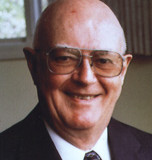Our Forgiveness Blog
Rage Reduction Through Forgiveness Education
By Dr. Robert Enright and Dr. Richard Fitzgibbons
After massacres in El Paso, TX, and Dayton, OH, in which 29 people died, President Donald Trump made a number of sensible recommendations to address violence and mass murders in the United States. He has been criticized for not calling for stricter gun controls but his words went to the heart of this crisis of hatred and violence:
“We must recognize that the Internet has provided a dangerous avenue to radicalize disturbed minds and perform demented acts. We must shine light on the dark recesses of the Internet, and stop mass murders before they start. . . We cannot allow ourselves to feel powerless. We can and will stop this evil contagion. In that task, we must honor the sacred memory of those we have lost by acting as one people.” (Read the Full Text Here.)
Below are our proposals for aspects of a comprehensive federal plan consistent with the President’s ideas. They are based on our combined 70 years of experience in research, education, and clinical work in uncovering and initiating treatment protocols in schools and in mental health treatment for excessive anger (or what psychiatrists call “irritability”).
Anger-reduction programs. The mental health field needs to develop protocols to identify individuals at risk for severe irritability and violent impulses. Next, empirically-verified treatment plans should be initiated for reducing intense anger and rage. Programs like this are rare in the mental health field.
A Secret Service report published last month, “Mass Attacks in Public Spaces,” found that 67 percent of the suspects displayed symptoms of mental illness or emotional disturbance. In 93 percent, the suspects had a history of threats or other troubling communications.
The mental health field needs to recognize that the training and ongoing education of health professionals has not been strong regarding the identification and treatment of irritability and violent impulses. So it is no surprise that the mass murderers of Sandy Hook, Virginia Tech, Lakeland, and Columbine had not been treated for their anger. We need training programs. They could be part of required Continuing Education credits for state licensure for psychiatrists, psychologists, and the other physicians who prescribe roughly 80 percent of psychiatric medications.
Our book, Forgiveness Therapy: An Empirical Guide for Resolving Anger and Restoring Hope, published by the American Psychological Association, can be one such training tool for mental health professionals. Forgiveness has been empirically verified to reduce unhealthy anger.
Education in schools. Education programs in schools could uncover and teach youth how to resolve intense anger and desires for revenge that lead to a sense of pleasure in expressing violent acts against others. Dr. Enright has worked to establish scientifically-supported programs for reducing anger in youth through forgiveness education curricula (from pre-kindergarten through grade 12). These educational guides have been sought by educators in over 30 countries. Dr Enright’s books, Forgiveness Is a Choice, The Forgiving Life, and 8 Keys to Forgiveness, can be used as anger-reduction tools with older high school students, college students, and adults.
Teach respect for persons. A key development for forgiveness education is a new perspective on humanity: all have inherent worth, even those who act unfairly. In other words, these programs not only reduce anger, and thus eliminate a major motivation to hurt others, but also engender a sense of respect for persons.
This combination of reduced irritability and a new perception of the worth of all could go a long way in reducing rage and thus in reducing mass shootings.
Regulate violent video games. Violent video-gaming and media violence have played a role in the behavior of mass murders. A continual exposure to gaming that denigrates others in a virtual environment is a sure way of damaging respect for persons. Such “games” have courageously been identified by the President as factors in the epidemic of violence. Rather than teaching the importance of mastering anger without hurting others (character education), some games support the expression of rage and violence.
We need Federal laws. Youth are not allowed into movie theaters for X-rated fare. This should be the case with video games, which should be lawfully kept from youth when judged to have content that demonstrates and even encourages excessive anger. Parents should teach their children how to resolve their anger without harming others and should prohibit violent games in their homes. Violent games must have a warning that they could promote uncontrollable anger.
What about the guns? The President has identified essential issues that need to be addressed on the federal level to end the epidemic of massacres by individuals with severe, largely unrecognized and untreated, psychological problems.
While it is essential to try to keep guns out of the hands of those prone to act on their hatred, more important is the establishment of new anger control programs which will make for a safer America.♥
Robert Enright, Ph.D., is a Professor of Educational Psychology at the University of Wisconsin-Madison and a Board Member of the International Forgiveness Institute, Inc.
Rick Fitzgibbons, MD, is a psychiatrist in Conshohocken, PA. They are joint recipients of the 2019 Expanded Reason Award, presented by the University Francisco de Vitoria (Madrid) in collaboration with the Vatican Foundation Joseph Ratzinger/Benedict XVI.
This blog originally appeared on the MercatorNet.com website on August 14, 2019.
Your Forgiveness Legacy
Forgiveness is not finished with you yet. How will you lead your life from this point forward? It is your choice. When that story is finally written, what will the final chapters say about you? The beauty of this story is that you are one of the contributing authors. You do not write it alone, of course, but with the help of those who encourage you, instruct and guide you, and even hurt you. You are never alone when it comes to your love story. It does not matter one little bit where the story was going before you embraced the virtue of forgiveness. What matters now is how you finish that story, how you start to live your life from this point forward.
What do you think? Do you think that most people are deliberately and consciously writing their own love stories, in part on the basis of leading The Forgiving Life? Or, are most people rushing by, not giving much thought to forgiveness or love?
What do you think? Do you think that most people are aware of their legacy, what they will leave behind from this precise moment on, or are they rushing about, not giving a moment’s notice to that legacy?
What do you think? Do you think that you can make a difference in a few or even many people’s lives by awakening them to the fact that they can rewrite their stories and make them love stories through forgiveness?
Robert Enright
Enright, Robert D. (2012-07-05). The Forgiving Life (APA Lifetools) (Kindle Locations 5320-5331). American Psychological Association. Kindle Edition.
Can We Get Anti-Bullying Programs to Work?
In an August 13, 2019 essay at mercatornet.com, author Izzy Kalman states that the anti-bullying movement is doomed to failure. This is the case because, in his words: “The goal of the anti-bullying movement is to convince us all to stop bullying or tolerating bullying. Unfortunately, the message falls on deaf ears because hardly anyone believes that they are bullies.”
In other words, those who bully are in denial and so attempts to convince them to change are futile. We are more hopeful of successful attempts at reducing bullying because of our approach, which, as far as we can tell, is unique.
Sometimes some students are so emotionally wounded that their anger overwhelms the attempt at consciousness-raising. The students are so very wounded that they cannot listen well. Some are so wounded that they refuse to listen. Even others are so mortally wounded that they find a certain pleasure in inflicting pain on others. It is when it gets to that point—others’ pain equals pleasure for the one inflicting it—that we have a stubborn problem on our hands. No signs, no consciousness-raising, no rally in the gym, no pressure to be good is going to work…..because the gravely wounded student is now beyond listening.
Yet, we have found a hidden way to reverse the trend in those who are so hurting that they derive pain from hurting others. It is this: Ask the hurting students, those labeled so often as bullies, to tell their story of pain, their story of how others have abused them.
You will see this as the rule rather than the exception:
Those who inflict pain over and over have stories of abuse toward them that would make you weep. In fact, we have seen the weeping come from the one who has bullied others, the one who has inflicted serious pain onto others. He wept because, as he put it, “No one ever asked me for my story before.” His story was one of cruel child abuse from an alcoholic father who bruised him until he bled. And no one ever asked him about this. And so he struck out at others. Once he told his story, he began to forgive his father and his pain lessened and thus his need to inflict pain on others slowly melted away.
This is what our Anti-Bullying Forgiveness Program does. It aids counselors and teachers in bringing out the stories in the pain-inflictors so that their own pain dramatically decreases. As this happens, through forgiveness, bullying behavior is rendered powerless……because in examining their own hurt they finally realize how much hurt they have inflicted…..and with their own emotional pain gone, they have no desire to live life like this any more.
Come, take our anti-bullying curriculum and save the life of at least one child and help prevent inflicted pain on countless others.
Robert
EDITOR’S NOTE: For a limited time only, the International Forgiveness Institute is offering Dr. Enright’s Anti-Bullying Forgiveness Program as a free gift to counselors, schools, and families. Click here to order.
Learn More:
- A New Approach to School Bullying: Eliminate Their Anger
- Solution to Rampant Bullying–Forgiveness Education
- We Must Treat the Cause and Not Only the Symptoms of Bullying
- Adverse Impacts of Childhood Bullying Extend Into Adulthood
Reflections for the 25th Anniversary of Our International Forgiveness Institute, Inc.
It was the early 1990’s and I just recently did an interview for a Chicago newspaper. The journalist published my home telephone number within the article. For the next two weeks, it seemed as if the phone just would not stop ringing. The people who called were seeking information about how to forgive. “There is a genuine hunger out there for people to know how to go about forgiving,” was my conclusion to family and colleagues.
about how to forgive. “There is a genuine hunger out there for people to know how to go about forgiving,” was my conclusion to family and colleagues.
Because we had published the first-ever empirical article on forgiveness in a peer-reviewed journal article only a few short years before this, in 1989, there was little out there instructing people on how to forgive those who have deeply hurt them. Because of the ground-breaking work of Msgr. John Hebl, with whom I had the honor of publishing the second-ever empirical article on forgiveness in a journal, in 1993, there was emerging scientific support for our Process Model of Forgiveness.

William Walker
About this same time, the late and great Dr. William Walker of Madison, who ran radio stations, wrote a letter to me (email was not big yet). He explained that many years ago, he received his doctoral degree from the Department of Educational Psychology at the University of Wisconsin-Madison, where I was (and am) a professor. Dr. Walker explained to me that he was drawn to our forgiveness work, had the financial means to bring this to an important level, and he had an interest in joining the research. I enthusiastically agreed and a strong collegial relationship and friendship developed.

Tom Walker
When my dear friend William passed away, his son Thomas Walker took up the cause and provided the necessary funding to keep the IFI viable and expanding, as he does to this day.
Thank you, William and Thomas!
Given that we were getting some financial support and the many requests for forgiveness information continued, some of my colleagues and I decided to try to form an entity with the goal of serving people who wanted information on how to forgive. This was to start as a service entity for all who were interested in forgiving.
Our little group decided to take the non-profit route and developed the 501(c)3 entity, the International Forgiveness Institute, Inc. (IFI) in Madison, Wisconsin in 1994. A Board of Directors was formed to help guide the development of this organization. Thank you, Board Members, for your dedicated service to our IFI! At the time of its formation there was nothing “international” about this organization. Yet, it was the vision, the promise of such expansion, that led to our keeping that word “International” in the title. We, of course, started small, without even a website.
International Forgiveness Institute, Inc. (IFI) in Madison, Wisconsin in 1994. A Board of Directors was formed to help guide the development of this organization. Thank you, Board Members, for your dedicated service to our IFI! At the time of its formation there was nothing “international” about this organization. Yet, it was the vision, the promise of such expansion, that led to our keeping that word “International” in the title. We, of course, started small, without even a website.
A major turn occurred for us at the beginning of the 21st century. Because our work was having success in the mental health field with our Process Model of Forgiveness, I had an idea: Why not start to introduce forgiveness to children and adolescents? After all, if they will experience injustices, perhaps even severe injustices in this world, why not equip them with the scientifically-supported approach of forgiveness to reduce the resentment, caused by the injustices, so that they can be resilient in their emotional well-being and in their healthy family interactions?
With the idea of prevention in mind, we decided to build forgiveness curricula for children, starting in first grade (age 6 and 7). We did so through age-appropriate children’s stories, such as Dr. Seuss’ Horton Hears a Who. The children, in their own classrooms, then begin to see what forgiveness is, how story characters navigate interpersonal conflict, and what happens when people forgive. We piloted this curriculum for the first time in Belfast, Northern Ireland, did the research on this endeavor through the university, and published the first empirical evaluations of this work in 2007.

Primary 3 students at Holy Family Primary School in Belfast celebrate their “Forgiveness Graduation.”
The results were dramatic! Children, upon hearing stories and reflecting on the theme of forgiving, actually reduced in their own anger. Teachers saw greater cooperation among students in classrooms and teachers reported to us that they, themselves as teachers, improved in their own teaching skills as a result of being a forgiveness instructor.
The Forgiveness Education project grew to such an extent that we now have a complete set of curriculum guides from pre-kindergarten (age 4) all the way up to the end of high school (age 18), including an anti-bullying guide and two guides for parents: A Family Guide (for those with primary-aged children) and Strengthening Families (for those with middle-school aged children). Dr. Jeanette Knutson, Amber Osmulski, and Dr. Matthew Hirshberg helped to craft these guides. Thank you, Jeanette, Amber, and Matthew!
 The Forgiveness Education curriculum guides have been ordered by educators from over 30 countries across the world. Other international endeavors include both the Jerusalem Conference on Forgiveness and the Rome Conference on Forgiveness and a new Forgiveness Education initiative in Bethlehem in the Middle East. Thank you, Mr. Thomas and Terri Lucke, for your generous funding! We now, I think, have earned the word “International” in our organization’s title.
The Forgiveness Education curriculum guides have been ordered by educators from over 30 countries across the world. Other international endeavors include both the Jerusalem Conference on Forgiveness and the Rome Conference on Forgiveness and a new Forgiveness Education initiative in Bethlehem in the Middle East. Thank you, Mr. Thomas and Terri Lucke, for your generous funding! We now, I think, have earned the word “International” in our organization’s title.
Our long-time Director at the IFI, Dennis Blang, has been instrumental in sending far and wide information about the Forgiveness Education guides, in maintaining our website, publishing the Forgiveness News, crafting the electronic newsletters, and overseeing the everyday important activities of our institute. Thank you, Dennis! And thank you to our earlier Directors, Dr. Gayle Reed and Mary Mead!
The service work has expanded so that we now are serving homeless people, those in prisons, and we have started a bumper-sticker campaign, “Drive for Others’ Lives” as a way to help make the roads a more civil environment. Many of these new ideas come from our stellar volunteer at the IFI, Jacqueline Song. Thank you, Jacqueline!
A big thank you goes out to our long-term President, Roy Lloyd, and to our Ethics Committee members for their dedicated work in examining our protocols that impact the homeless, those in prison, and others. Thank you to those “on the ground” who oversee important forgiveness programs in Belfast (Leah Judge), Greece (Dr. Peli Galiti), and Monrovia, Liberia (Rev. Kortu Brown and Mr. George Cooper). We want to thank all who have financially contributed to our efforts over this quarter-of-a-century.
 We started with one idea: Forgiveness is important as it can quell unhealthy anger and improve mental health and relationships. Many are catching on to this idea. In our humble opinion, forgiveness should now become a natural part of families, schools, organizations, and individual hearts for the good of humanity.
We started with one idea: Forgiveness is important as it can quell unhealthy anger and improve mental health and relationships. Many are catching on to this idea. In our humble opinion, forgiveness should now become a natural part of families, schools, organizations, and individual hearts for the good of humanity.
Long live forgiveness!
Robert
In Memoriam: Eva Mozes Kor and Her Independence Day
Eva Mozes Kor (January 31, 1934 – July 4, 2019) is one of my heroes. This is the case because of her unrelenting message that she, personally, and not representing any group, forgave the Nazis for their abuse of her twin sister, Miriam, and herself while they were imprisoned in the Auschwitz Concentration Camp in Poland during World War II.
Their experience was horrific. Both were injected with a poison, which eventually took Miriam’s life and left Eva almost deceased in the camp. Yet, Eva’s will to live dominated and not only did she survive but also, later, she donated a kidney to Miriam in the hope of aiding her survival. When Miriam passed, there was not sufficient time for Eva to get from her home in the United States to the Israeli funeral, thus adding one more incident which could have embittered her. Instead, she lived a life of love, sacrifice, and forgiveness.
What I find so intriguing about Eva’s exemplary life is her steadfastness when it came to forgiving the Nazis. She had ample opportunities to back off from such a gesture because of heavy criticism from others. Mengele did not apologize; you cannot forgive on behalf of others (which she did not); to forgive such a horror is improper. While it is true that many have their convicted reasons why they, personally, would not forgive in this context, Eva realized that hers was a private decision that she willingly chose.
The forgiving worked well for her. As one example, in the film, “Forgiving Dr. Mengele,” she is shown, in her elderly years, running robustly on a treadmill in a gym. A crushed heart with no hope does not lend itself to such strenuous exercise. In another segment, she is seen comforting a teenager who was shouldering deep pain. Eva was the comforter, showing a motherly love to this teenage whom she was meeting for the first time. Her love was brighter than all of the atrocities perpetrated against her.
“Forgiveness is a way of healing oneself from pain, trauma, and tragedy.
It is a means of self-liberation and self-empowerment.”
Eva Mozes Kor
I know of Eva’s strong and loving attributes from personal experience, having had the honor of sharing air time with her on the radio and having met her and her strong son, Alex, for a dinner engagement.
Eva found a freedom, an independence from what could have been a lifelong hatred. The freedom won. It, thus, is fitting that this immigrant to America passed away on Independence Day in the United States, when the new nation shed oppression in 1776. Eva, having known oppression, rose to her Independence through forgiveness.
May your forgiveness live on, Eva. Thank you for a life lived with integrity, steadfastness, and forgiveness.
Robert
Read more about and by Eva Mozes Kor:
- “My Forgiveness” – A guest blog Eva wrote for this website last year.
- “Let’s Heal the World Through Forgiveness” – Eva talks about forgiving Joseph Mengele, the infamous “Angel of Death of Auschwitz” who tortured her and her twin sister.
- “Forgiveness Brings Peace” – Eva discusses a new film (“Eva”) about her life.
- History of the Holocaust – Learn more about the systematic state-sponsored killing of six million Jewish men, women, and children and millions of others by Nazi Germany and its collaborators during World War II.
- “I Survived The Holocaust Twin Experiments” – Eva discusses the horrors she and her family endured during the Holocaust (a 14:47 video by BuzzFeedVideo on YouTube with actual concentration camp footage).
- “Nothing Good Ever Comes From Anger” – Eva talks about meeting former Nazi prison guard Oskar Groening during his trial in 2015.



